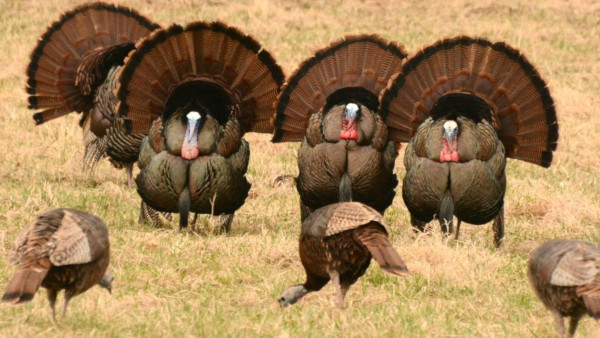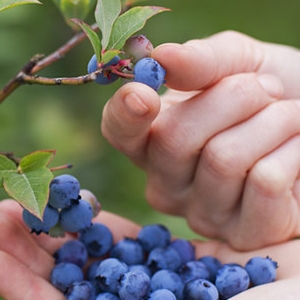There’s a tradition in the U.S. that New England’s indigenous people welcomed the first European settlers with their traditional foods – which were all new to the newcomers and without which the folks on the Mayflower might have starved before they could establish a permanent colony…
 Male Wild Turkeys put on an elaborate mating show for apparently
Male Wild Turkeys put on an elaborate mating show for apparently
uninterested females. Commercially farmed Turkeys
bear little resemblance to these guys…
Likewise, one of the earliest food-related stories about the French arrival in what’s now Quebec involves the suggestion from local native people that the disease-ravaged Europeans try their traditional foods and medicines – notably Tamarack Tea which is rich in vitamin C, without which the newcomers might not have survived their first winter.
In Southeast Asia, the locals taught the British and other European ‘invaders’ to drink Hot beverages such as Tea to make themselves perspire and, by evaporation, cool themselves in the hot, dry season.
It seems wherever you look, indigenous foods played a role in the ability of Europeans to establish footholds in new parts of the world.
Some traditional foods since neglected
Tamarack Tea is just one indigenous North American food that has been left by the wayside as European based culture and traditions have taken root in the New World. On the other hand, other native North American Foods have become core elements of our diet.
Left by the wayside
Caribou, Moose, Bear and other large animals. Europeans brought Cattle, Sheep, Swine with them rather than adapting their diets to local Red Meats. Even the latest cook books bent on reintroducing these meats describe them as gamy, tough and more or less unpleasant. One exception is Bison, which was also a favourite of indignous people – until Europeans hunted them almost to extinction in the 19th century. Now, the Bison you get in stores and restaurants is all farmed.
Squirrel, Hare, Wild Birds and other small animals are now considered marginal foods and, where consumed, are not relied upon by most folks as staple Meats. On the other hand, the tradition of roasting Turkey goes all the way back to the legend of the first Thanksgiving, where local natives brought them to the feast table. Turkey was found so desirable by European newcomers that the species was adopted as part of the mainstream diet and the birds are not intensively farmed, to the point hat the cultivated breeds bear little resemblance to the wild birds from which they are descended.
Produce more popular
In Europe, they call Sweet Corn – the kind humans eat – Maize, to differentiate it from ‘Corn’, which is what they called all Grains, principally those used as animal feed, before being exposed to native North American foods. The word ‘Maize’, meaning a tall grass that bears Kernels of dense seed heads, actually comes from Hindu, another culture and cuisine from which Europeans adopted a massive amount of food tradition and culture.
Other North American plants Europeans learned to love, and eventually claimed as their own, include a wide variety of Berries such as Blueberries, Cranberries, Elderberries and Saskatoon Berries. Chokecherries are also native to North America. Concord Grapes are uniquely found in the wild in temperate regions of the northern U.S. and southeastern Canada.
Tomatoes, Potatoes, Pumpkins and other Winter Squash are all native to North America.
Cocoa / Chocolate and Avocados are native to Mexico.
Peanuts, which are actually a Legume, not a Nut, are native to the Southern U.S.
On the comeback trail
Another day, soon, we’ll look at some traditional indigenous foods that are enjoying a comeback under the stewardship of a new generation of Chefs with indigenous roots….
~ Maggie J.

